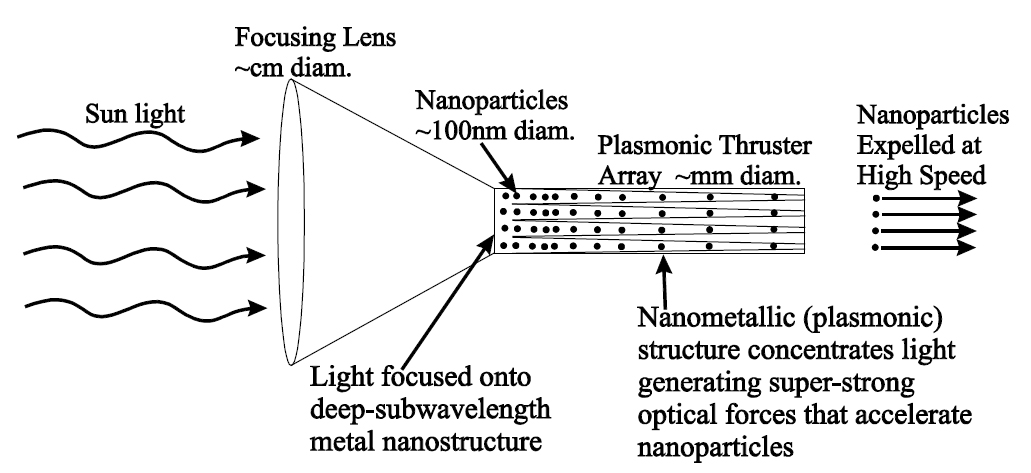Joshua Rovey
University of Missouri, Rolla
2014 Symposium Presentation (PDF)
Phase I Final Report (PDF)
Phase II Overview
Description
The full potential of small spacecraft remains untapped because they lack maneuverability. Plasmonic force propulsion provides attitude control capability for small spacecraft with no power penalty and minimal mass and volume penalty. This creates new capabilities for small spacecraft enabling NASA science and exploration missions that were previously impossible. One of NASA’s strategic goals is expanding scientific understanding of the Earth and the universe. NASA envisions a broad class of scientific missions where extremely fine pointing and positioning of spacecraft is required, such as a single Earth observing spacecraft, deployable x-ray telescopes, exoplanet observatories, and constellations of spacecraft for Earth and deep space observations. In recognizing this, the National Research Council emphasized the need for micro-propulsion for extremely fine pointing and positioning of micro-satellites for astrophysics missions.
Within the context of these types of missions, we propose to assess the ability of plasmonic force propulsion to advance the state-of-the-art. We propose to numerically simulate plasmonic force fields with asymmetric/gradient geometry and relevant solar light constraints, predict nanoparticle velocity, mass flow rate, and resulting propulsion performance (thrust, specific impulse), and evaluate spacecraft position control resolution and pointing precision enabled by plasmonic propulsion. We will compare our results with state-of-the-art thrusters (e.g., colloid/electrospray electric propulsion) and torquers (e.g., reaction wheels). We will also assess the feasibility of plasmonic propulsion to meet and/or exceed the stringent demands of future NASA missions.
Our team is composed of experts in the fields fundamental to the physics and application of the concept: plasmonics and space propulsion. The proposed plan of work can be achieved within the proposed schedule because the proposed tasks build upon existing models and simulation tools already available to us. While the focus of the project is plasmonics for space propulsion, the proposed research will have wider application and relevance to optical nanotechnology with many non-aerospace spin-offs, such as plasmonic solar cells, thermoplasmonics for cancer thermal therapy, compact biological sensors, and photonic integrated circuits for optical communications. Plasmonics is an exploding new field of science and technology that is rapidly impacting every facet of optics and photonics, and is predicted to be one of the highest impact fields of the 21st century.































